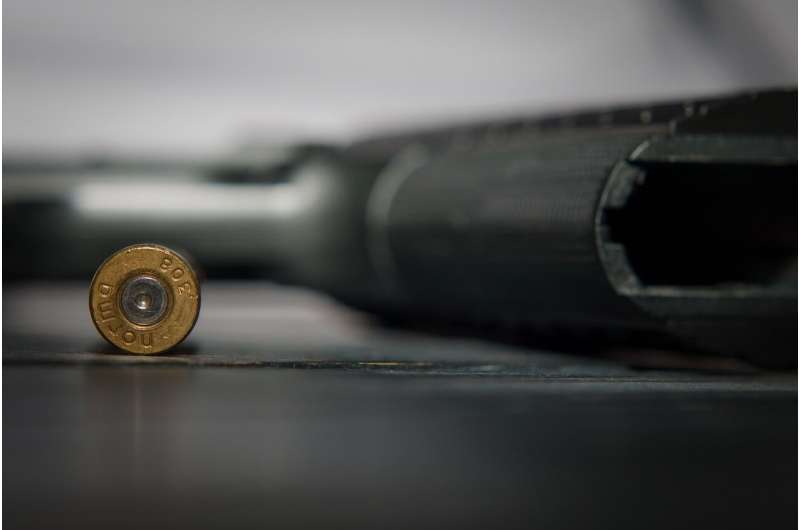USA
Who bought firearms during 2020 purchasing surge?

A new Rutgers study has found that people who bought firearms during the COVID-19 pandemic and national surge in firearm sales tend to be more sensitive to threats and have less emotional and impulse control than firearm owners who did not make a purchase during this time
In the study, which was published in the journal Science and Social Medicine, the researchers surveyed 3,500 adults in the United States, 32 percent of whom owned a firearm. While firearm owners in general still reported less emotional control and impulse control than those who did not own firearms, they were less sensitive to threats and fear.
"We focused on those who purchased firearms during a time of substantial stress with the COVID-19 pandemic, a contentious election and a large racial justice movement following the death of George Floyd," said co-author Taylor R. Rodriguez, a member of the New Jersey Gun Violence Research Center, based at Rutgers. "People who are sensitive to threats such as these and who have difficulties with impulse control are buying firearms at a greater rate during this unprecedented time."
The study also indicates that those who plan to purchase firearms in the next year are also prone to poor impulse and emotional control, which may drive decisions like firearm purchasing.
"Even though we know that firearm access increases the risk for a host of dangerous outcomes, it may be that purchasing firearms provided these individuals with a sense of safety and control," Rodriguez said.
The Rutgers research highlights the need to examine the personality traits of those who purchase firearms in order to get a better understanding of these surges in firearm sales.
"We are living through stressful, uncertain times, and individuals who tend to be on the lookout for threats and who make rash decisions may be coping with that by purchasing firearms," says co-author Joye C. Anestis, an associate professor at Rutgers School of Public Health. "Research on firearm ownership has historically overlooked personality as a factor in understanding who purchases firearms and why. Our findings highlight the need to change that practice.People who purchased guns during buying surge more likely to have suicidal thoughts
More information: Joye C. Anestis et al, Dispositional characteristics in firearm ownership and purchasing behavior during the 2020 purchasing surge, Social Science & Medicine (2021). DOI: 10.1016/j.socscimed.2021.114408
Journal information: Social Science & Medicine
Provided by Rutgers University
Gun violence soared during the COVID-19 pandemic, but the reasons are complex

In a new study, we found that the overall U.S. gun violence rate rose by 30% during the first year of the COVID-19 pandemic compared to the year before. In 28 states, the rates were substantially higher between March 1, 2020, and March 31, 2021, compared to the pre-pandemic period from Feb. 1, 2019, through Feb. 29, 2020. There were 51,063 incidents of gun violence events resulting in injury or death in the United States in the first 13 months of the pandemic compared to 38,919 incidents in the same time span pre-pandemic.
Early in the pandemic, gun sales in the United States surged, with more than 20% of these purchases by first-time buyers. And access to firearms is a well-established risk factor for gun-related suicide and homicide. This sharp increase in firearm purchases raises serious concerns, since the combination of increased stress, social disruption and isolation during the pandemic created a perfect storm of conditions that could contribute to increased gun violence.
These trends were also concerning since the increased rates of gun violence could strain the health care infrastructure that was overtaxed due to an unprecedented influx of COVID-19 patients.
We are a team of scientists and physicians with expertise in preventive health care and modeling diseases of public health concern.
How pandemic conditions played a role
The pandemic has been associated with psychological distress due to increased isolation, increased rates of domestic violence, a disruption of social networks and unemployment. But much more research is needed to get a clear picture of how all of these variables may have contributed to overall gun violence.
We used a publicly available database of gun violence events and divided those events by the number of people living in each state. We also added other factors such as age, race and ethnicity, and we recorded the status of each state's stay-at-home orders and the number of COVID-19 cases. We found that gun violence rates increased substantially in 28 states, or 56% of all states, scattered throughout the U.S., without any clear pattern. The increase in gun violence was highest in Minnesota, with a 120% increase.
Due to ongoing police investigations, we were advised to not separate out counts of suicides and homicides before investigations are completed. To get a fuller picture, it will be important for future studies to assess comparisons of suicide and homicide rates during this same period.
The spike in gun violence in the era of COVID-19 comes as a stark reminder that greater public health resources are needed to address and prevent gun violence, even as we continue to work to mitigate the pandemic.US gun violence increased 30 percent during COVID-19 pandemic
Provided by The Conversation
This article is republished from The Conversation under a Creative Commons license. Read the original article.![]()
No comments:
Post a Comment